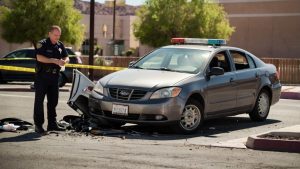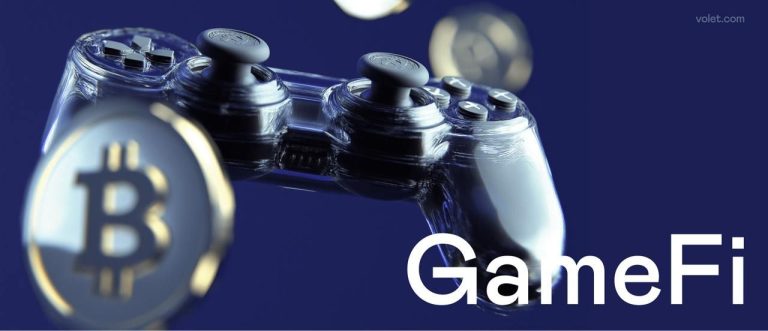Driving in the Entertainment Capital: How to Stay Safe on Las Vegas Roads
From the Strip to Summerlin, traffic here has its own rhythm. This guide, Driving in the Entertainment Capital: How to Stay Safe on Las Vegas Roads, shows you smart habits, local rules, and escape routes plus when a car accident lawyer can help after fender-benders or serious crashes too.

Even the safest drivers can be hit by a distracted tourist, a speeding local, or a rideshare in a rush. Keep this phrase in mind not just for lawsuits but for free consultations, guidance on claims, and help negotiating with insurers if a crash disrupts your vacation or daily commute.
Know the Terrain: Roads, Lanes, and Local Quirks
Las Vegas isn’t one road called “The Strip.” It’s a grid of multi-lane arterials Las Vegas Boulevard, Tropicana, Flamingo, Sahara interlaced with freeways like I-15, I-515/US-95, and the Bruce Woodbury Beltway (215). Expect frontage roads, sudden lane drops near casino driveways, and frequent right-turn slip lanes that attract pedestrian crossings.
Master a few habits:
- Scan far ahead for brake lights near resort entries where taxis and rideshares swarm.
- Keep a steady lane on I-15; weaving saves seconds but multiplies risk.
- When a light turns green, pause a heartbeat for late left-turners who treat yellow like a suggestion.
- Watch for pedestrians stepping out from behind buses, median planters, or LED signs that mask movement.
Parking garages deserve special attention. Sightlines are tight, pedestrians appear between SUVs, and impatient drivers shoot diagonally for open spots. Go 5–8 mph, use headlights even in daylight, and choose stairs or elevators away from tight spiral ramps.
Outside the core, expect desert glare and mirage shimmer. Polarized sunglasses help reveal brake lights sooner, while a microfiber cloth keeps dust off cameras and sensors so lane-keeping assists, automatic braking, and backup cameras perform as intended.
Timing Is Everything: Congestion, Events, and Heat
Traffic pulses with conventions, concert residencies, fight nights, and game days. Weekends, late afternoons, and post-event surges clog I-15 near the Tropicana and Russell interchanges and the streets feeding the resort corridor. Summer heat also strains engines and tires, increasing blowout risks and roadside breakdowns that bottleneck lanes.
Plan around the clock: Leave 15–20 minutes early, add extra time on event nights, and consider parallel arterials like Paradise Road, Koval Lane, Dean Martin Drive, and Sammy Davis Jr. Drive, which shadows the Strip without its chaos.
Heat safety: Before long drives, check coolant, belts, and tire pressures (heat raises PSI); stash water for everyone in the car; avoid leaving electronics or aerosol cans inside.
Typical Congestion Windows by Corridor
| Corridor / Area | Peak Hours (approx.) | What to Expect |
| I-15 near the Resort Corridor | Fri 3-8 pm; Sat 5-10 pm; event outflows | Stop-and-go, sudden lane changes toward exits |
| Tropicana/Flamingo/Sahara | Weekdays 7-9 am; 3-7 pm | Long signals, mid-block turns, heavy pedestrian volumes |
| Strip (Las Vegas Blvd) | Evenings 6-11 pm; holidays | Slow crawl, frequent jaywalking, sightseeing stops |
| 215 Beltway (west & south) | Weekdays 7-9 am; 4-6:30 pm | High speeds mixed with abrupt merges from short ramps |
Preventing the Big Three: Impairment, Distraction, Speed
Vegas is party-forward, but impaired driving is never just a “vacation mistake.” If you drink, use rideshare or the monorail. For cannabis, remember that impairment rules mirror alcohol: if you feel altered, don’t drive. Many arrests start with minor infractions like rolling stops or drifting between lanes.
Distraction: Mega-screens and neon compete with navigation prompts and chatty passengers. Put your phone in Do Not Disturb, cue your route before launching, and set a co-pilot to manage music and texts. Look through glass not at it so your eyes stay outside the windshield.
Speed: Freeway speeds often float above the limit, but enforcement spikes around work zones and event weekends. High-speed rear-ends and side-swipes are common when drivers split lanes or misjudge closing distances. Maintain a 3-4 second following gap (5+ at night or in rain).
Safe Following Distance Quick Guide
Driving in the Entertainment Capital can be smooth with planning, patience, and street-smart habits. Prioritize visibility, space, and sober decisions, document any collision thoroughly, and lean on a trusted Las Vegas car accident lawyer when claims get complex so your time in Las Vegas stays about memories, not mishaps.
| Speed (mph) | Minimum Gap (sec) | Recommended Gap at Night (sec) |
| 25–35 | 3 | 4–5 |
| 45 | 3 | 5 |
| 55–65 | 3–4 | 5–6 |
| 70+ | 4 | 6+ |
Tourist Zones vs. Neighborhood Streets: Adjust Your Driving
On the Strip, assume pedestrians will appear anywhere, not just at crosswalks. Tour buses, limos, and rideshares make unpredictable curb moves. Use a wider buffer next to curbs and never accelerate the instant your light turns green—late crossers are common at multi-stage signals.
Beyond the resort corridor, neighborhoods like Summerlin, Henderson, and Silverado Ranch bring roundabouts, school zones, bike lanes, and shopping-center exits every 300–500 feet. Right-turn-on-red is legal after a full stop unless posted otherwise, but watch for cyclists filtering up on your right.
Key differences to remember:
- Pedestrians: Everywhere on the Strip; mostly crosswalk-bound in neighborhoods.
- Lane changes: Constant and abrupt near casinos; steadier in residential grids with longer gaps.
- Visual clutter: LEDs and reflections near resorts; simpler storefront signage away from the core.
- Enforcement: DUI and blocking-box uptown; speed and school-zone patrols in suburbs.
Rental Cars, Rideshares, and Insurance Essentials
Visitors often underestimate insurance needs. Rental desks sell bundles with unfamiliar acronyms; rideshare drivers juggle app demands and curb rules. The right prep spares you from long counters, confusing claims, and out-of-pocket surprises.
Rental Car Insurance Snapshot
| Coverage Type | What It Covers | When It Helps |
| Liability (SLI) | Injuries/damage you cause to others | Any crash where you’re at fault |
| Collision Damage Waiver (CDW/LDW) | Damage/theft to the rental car itself | Parking scrapes, hit-and-runs, theft |
| Personal Accident Insurance (PAI) | Medical for you/passengers | If health insurance is limited |
| Personal Effects Coverage (PEC) | Stolen personal items | Break-ins, luggage theft |
Rideshare realities: Curb access around hotels and the airport changes often. Use designated pickup zones, turn on hazard lights briefly if you must pause curbside, and never double-park in a travel lane. For drivers, remember platform coverage typically changes depending on whether you’re waiting for a ride, en route, or transporting.
Paperwork and photos: Keep rental agreements, insurance cards, and the car’s license plate noted in your phone. Photograph the car at pickup and return, including roof, wheels, and interior. In the sun, review photos in shade to ensure damage is visible.
If a Crash Happens Steps to Protect Yourself
First, breathe. Put on hazards, move to a safe shoulder if the cars are drivable, and check for injuries. Call 911 for emergencies; for minor collisions, use non-emergency lines as directed by dispatch. Exchange names, phone numbers, license plates, VINs, insurance carriers, and policy numbers.
Document the scene from multiple angles: overall intersection, each vehicle’s corners, skid marks, glass, and any obstructed signs or dark signals. If witnesses offer help, capture their names and numbers immediately, people vanish quickly in tourist traffic. Avoid apologizing or speculating about fault; just describe facts to officers and insurers.
For medical care, consider urgent care within 24 hours even if you “feel fine.” Adrenaline masks pain, and records help later. Notify your insurer promptly and follow up in writing. If the other driver is uninsured, your uninsured/underinsured motorist coverage (UM/UIM) may apply.
Conclusion
Finally, if confusion, injuries, or contested liability are in play, a quick call to a car accident lawyer can clarify your options, from preserving evidence to negotiating with aggressive adjusters. Many offer no-obligation consultations, which can be invaluable when you’re out of state or juggling work schedules.
FAQs
How do I handle pedestrian-heavy intersections on the Strip?
Treat greens as “new green.” Scan left-right-left, then roll. Expect late crossers and tour groups; do not block crosswalks or accelerate to beat flashing countdown timers.
Are there special rules for turning right on red in Las Vegas?
It’s generally allowed after a full stop unless posted otherwise. Yield to pedestrians and cyclists, and creep forward only when sightlines are clear of buses and large SUVs.
What should I pack in my car for desert driving?
Water for each person, sunscreen, a hat, a phone charger, a flashlight, and a tire inflator/gauge. Add a microfiber cloth for cameras/sensors and a basic first-aid kit.
When should I call a lawyer after a crash?
If anyone is hurt, fault is disputed, or insurance feels adversarial, consult a local attorney early. Many offer free case reviews within hours of a collision.
Is rideshare pickup on the Strip chaotic?
Use hotel-signed pickup zones and expect app pin shifts. Confirm the license plate, sit curbside with hazards briefly, and avoid double-parking or stopping in travel lanes.






